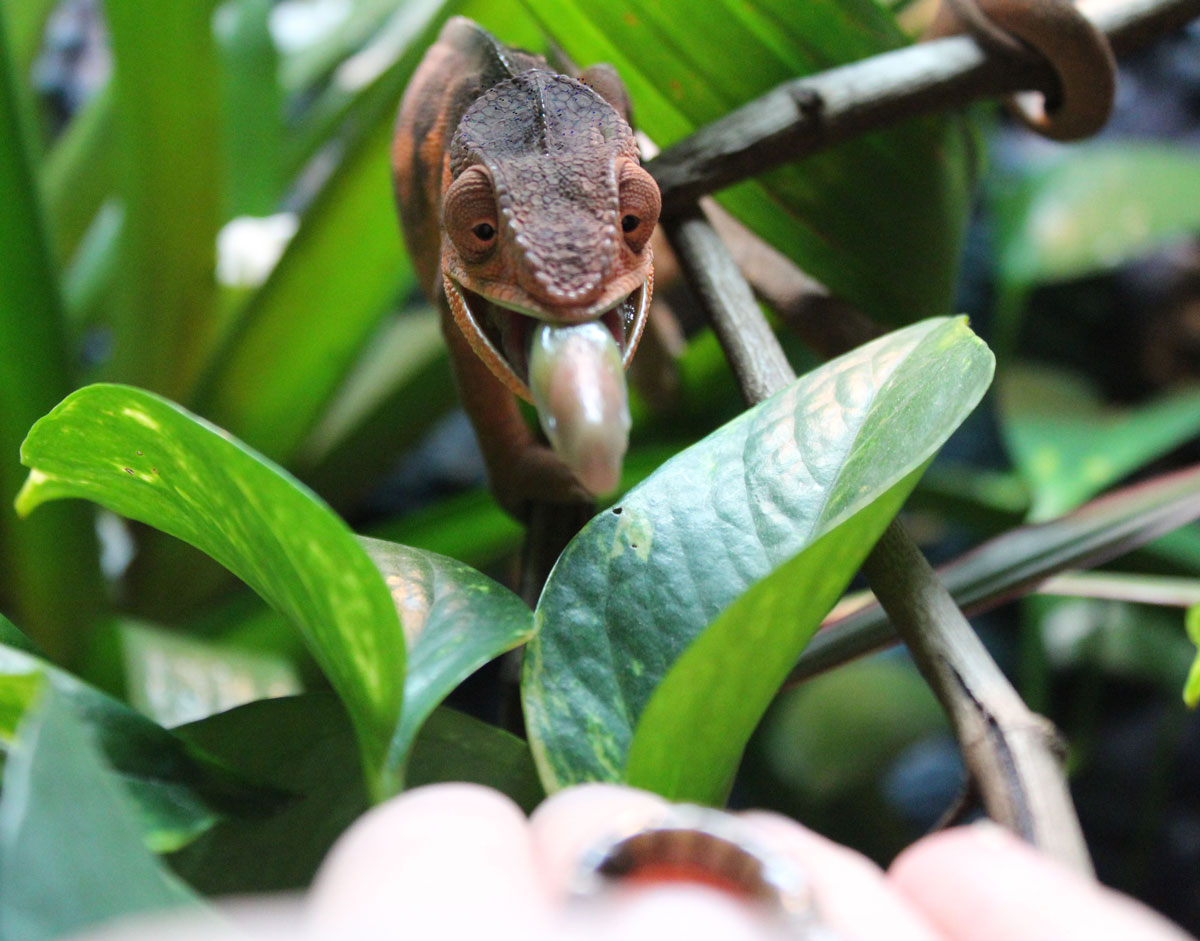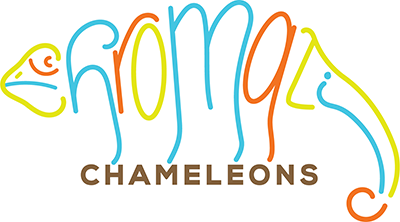
Hooray! You finally have your new chameleon, and hopefully you already have some insects at home to feed your new little tree dragon. You might be curious which feeders are the best for your new chameleon. Something that is important to offer your new friend is a variety of different feeder choices. We tend to cycle through a few main staples; crickets, grasshoppers, and silkworms. We also feed our chams superworms, Dubia roaches, green banana roaches, hornworms, blue bottle flies, black soldier flies, praying mantises, and cicadas and the babies also eat a variety of fruit flies and bean beetles. We tailor what we offer each individual cham based on their preferences and where they are at as far as growth stages and weight.
One thing you want to make sure you always do, is gut load your feeder insects. Your cham gets a lot of nutrition from the material your feeder insects consume before your cham eats them. You want to offer your feeder insects a nice assortment of fruits, vegetables, or pre-made gutloading products at least 24 hours before feeding them to your cham. For example, if you are picking up the crickets you feed to your chameleon at your local pet store, they likely have only been fed potatoes, if anything at all, for the whole time they’ve been in the care of the pet store. Now there’s nothing wrong with potatoes, but they do not make a complete gutload. We use a combination of collard greens, romaine lettuce, carrots, mustard greens, oranges, and squash for our bugs. The obvious exceptions to this are the silkworms and the hornworms. They eat their own pre-made mixtures.
If you are needing to pick a staple feeder, we generally recommend sticking to crickets as they are easily accessible at most local pet stores, gut load easily, and move around enough to be tempting to your chameleon. Grasshoppers have actually become our favorite here, but they can be difficult to source on a regular basis.
Setting up a small aquarium or critter keeper to house your feeder insects is necessary to be able to gutload them before feeding off to your chams. You’ll want them to be somewhere warm. Do not use a dish of water in the area you are keeping the feeder insects as they have a tendency to drown on accident. You can soak a makeup sponge in water, or use a potato slice to give access to water if you aren’t currently feeding them a fresh gutload. If you are using all fresh fruit and vegetables they will get all the moisture they need from those foods.
The other big question many people have is how much their chameleon should be eating each day, or if they even should be eating every day. We follow a rule that before 8 months we generally feed them just about as much as they want to eat. This averages around 15 small crickets for our 3-4 month old juveniles, or 3-4 grasshoppers. Once they reach 8 months, or their growth starts to slow, we cut them back substantially to around 8-10 large crickets every other day, or 1-2 large grasshoppers every other day. We supplement this with an additional 2-3 silkworms or superworms per week and the very occasional novelty insect. This ensures they are getting enough variety to not only keep them physically healthy, but the novelty can also keep them mentally healthy. If you have any questions about what to feed your chameleon feel free to reach out to us.
